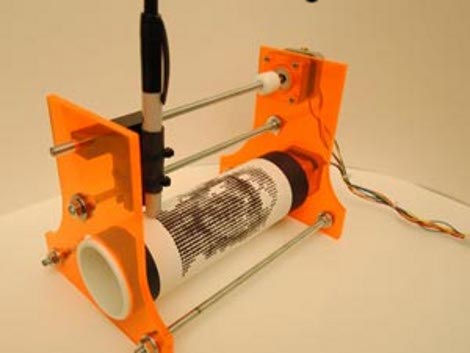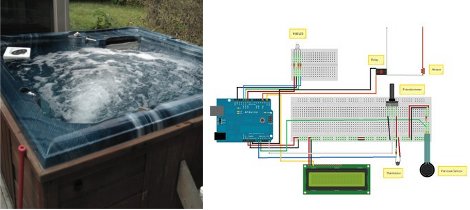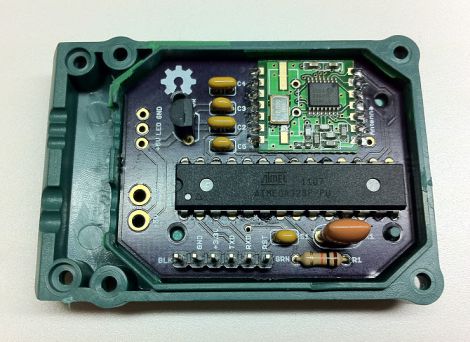
We think this is an intriguing take on half-tone art. It’s a CNC machine that uses an Arduino and two stepper motors to draw on a paper-covered drum. But you’re not just going to set it and forget it. To simplify the device, the Z-axis is not mechanized, but requires the dexterous opposing digit of a person to actuate.
The first prototype used a frame cut from plywood, but the developers moved to some attractive laser-cut Lexan for the final version. The rotating drum was inspired by observing the off-set printing process. It greatly simplifies the build when compared to a flat CNC bed. But including a Z-axis solution that could account for differently sized dots really opens a can of worms. Because of this, the choice was made not to automate that task, but to leave it up to the user. A clickable Sharpie does the marking. When the pen is in place, you click the plunger to hold the felt tip against the paper until a dot of the appropriate size has leeched onto the paper.
It’s not a bad solution to the problem. Especially if you don’t have the high-end milling equipment necessary to do this on a piece of plywood.
[Thanks Dron]
















